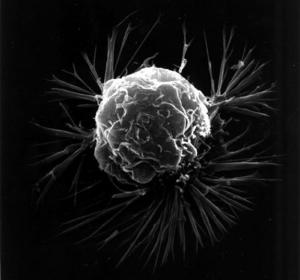
A patient with terminal heart failure is in “satisfactory condition” two months after becoming the first person to be fitted with Carmat’s artificial heart which is designed to beat for several years, his hospital said.
The 76-year-old man is eating normally, no longer needs constant respiratory assistance and is able to walk a little further every day thanks to physical therapy, the Georges Pompidou European Hospital in Paris said in a statement on Tuesday.
“The Carmat bioprosthesis continues to function satisfactorily, without any anti-clotting treatment since January 10,” said the hospital, where the implant surgery was performed on December 18 and where the patient is being treated.
It praised the patient’s “exemplary courage, sense of humour and family support” for playing a role in his recovery.
Heart-assistance devices have been used for decades as a temporary solution for patients awaiting transplants, but Carmat’s product is designed to replace the real heart over the long term, mimicking nature using biological materials and sensors.
It aims to extend life for thousands of patients who die each year while awaiting a donor, while reducing the side-effects that can be associated with transplants, such as blood clots and rejection.
Three more patients in France are due to be fitted with Carmat’s device. The people selected in this first series of clinical studies suffer from terminal heart failure – when the sick heart can no longer pump enough blood to sustain the body – and would otherwise have only a few days or weeks to live.
Success will be judged on whether the patients survive with the implant for at least a month. If deemed safe, the device will then be fitted into about 20 lower-risk patients.
A spokeswoman for Carmat declined to say when the other three patients in the first round of tests would be fitted with its artificial heart.
The company estimates around 100,000 patients in the United States and Europe could benefit from its artificial heart, a market worth more than 16 billion euros ($22 billion)
Chief Executive Marcello Conviti told Reuters in November that Carmat hoped to finish human trials of the heart by the end of 2014 and to obtain approval to market them in the European Union by early 2015.
Among its competitors for artificial heart implants are privately-held SynCardia Systems and Abiomed, both of the United States.
Source: Diabetes Support










